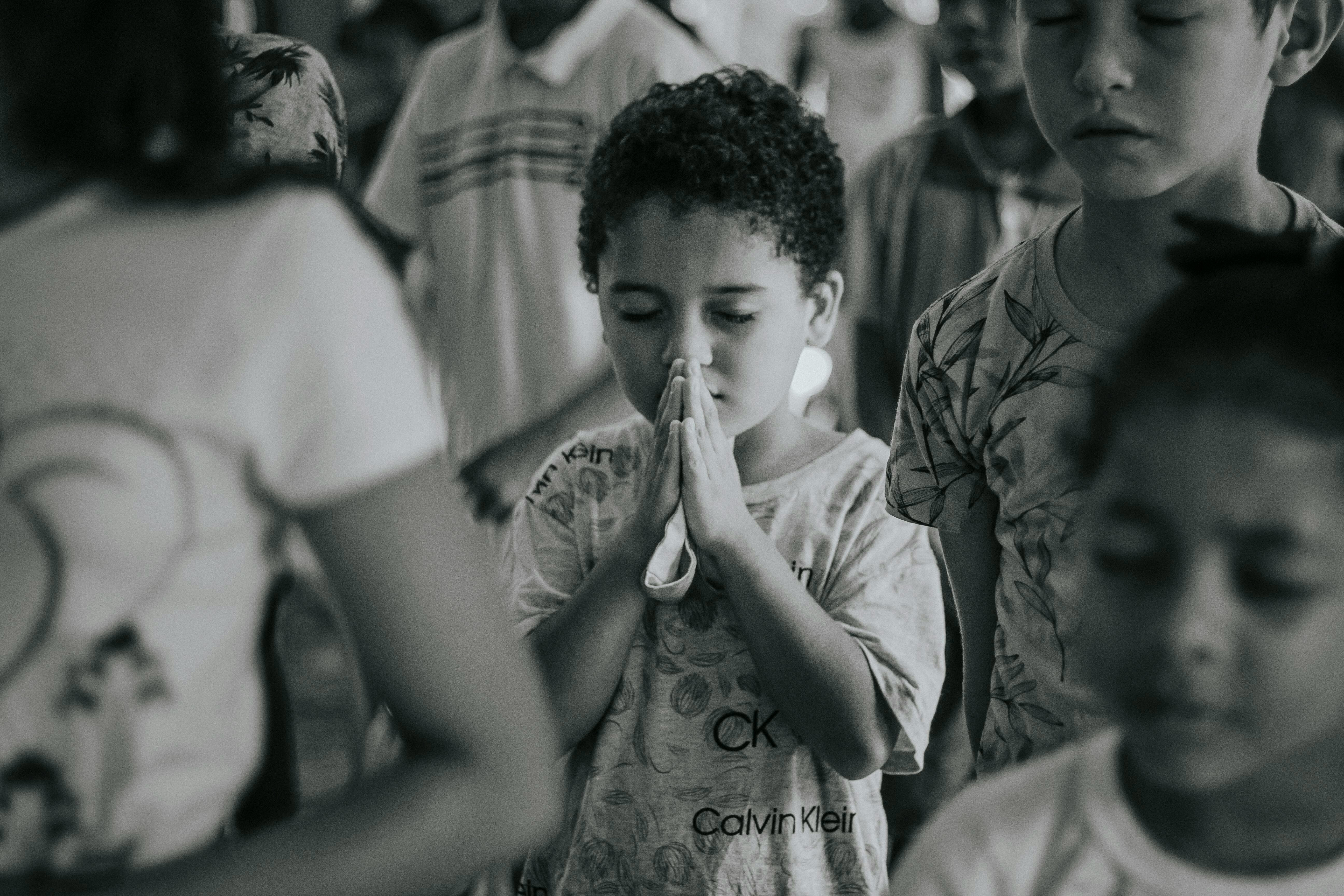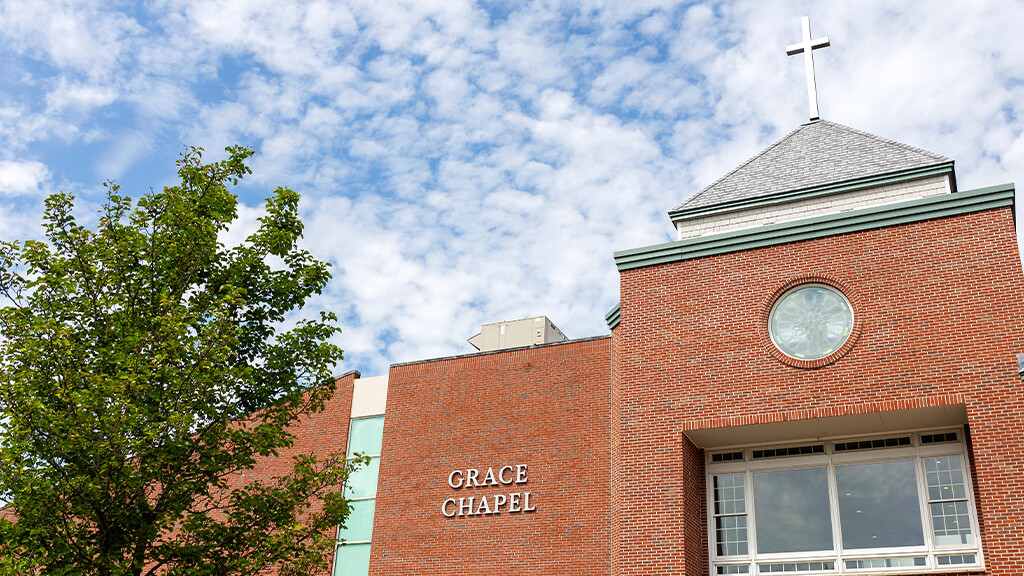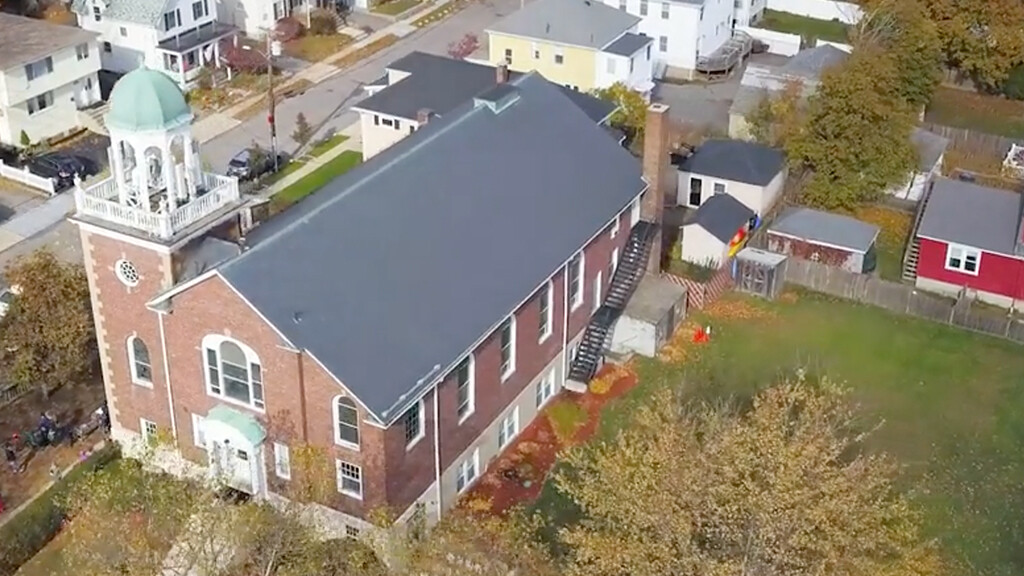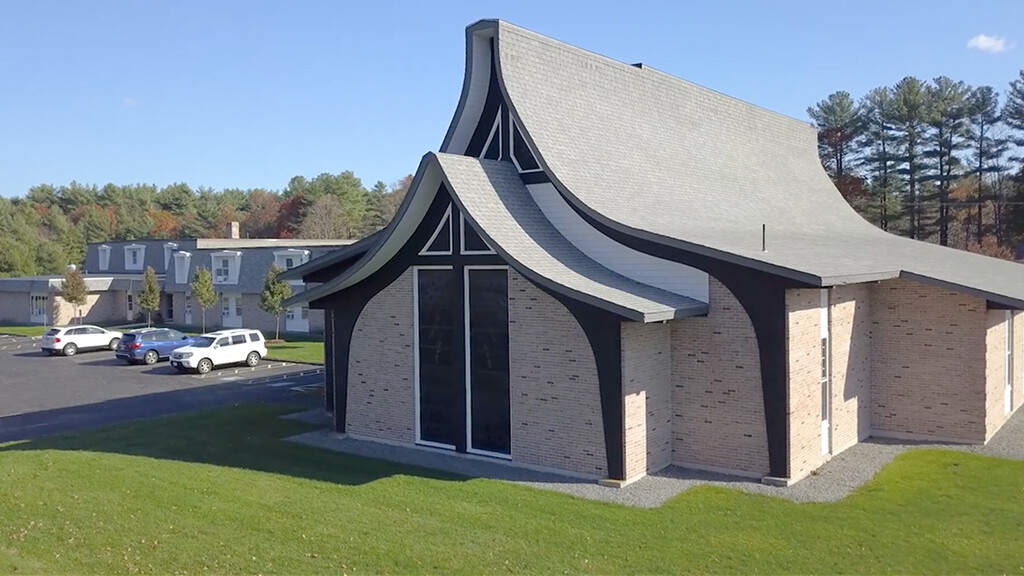
Christian prayer can be defined in so many ways that it makes the average person’s head spin. Prayer is sometimes “a conversation with God,” or a time of telling God about where you are, or it’s engaging in spiritual battle (as in, “prayer warrior”) or sometimes it’s just saying “thank you” to God before eating family dinner.
With all of the wide-ranging ways in which Christians experience and engage in prayer, how can we possibly hope to raise our children towards a coherent understanding of prayer? Where can we start, and how can we help them get started?
As with many things, the best answer is the simplest solution. And in this case, the most natural thing to do is search for how Jesus taught his disciples to get started with prayer.
Jesus’ method for learning prayer is not to spontaneously launch into eloquent language or long words. Instead, he teaches his disciples to practice the same prayer again and again until it becomes second nature.
Teach Us To Pray
Our Student Ministry Team recently taught through a series called, “Teach Us To Pray,” which was a line straight from the disciples’ mouths in Luke 11:1. What we found interesting is that in response to their request, Jesus offers no instruction or information on how to pray.
What we often misunderstand about the request of the disciples is that we add a “how” into their words that just isn’t there.
Our world is saturated with “how-to” guides. A quick search on Google or YouTube will get back hundreds of thousands of results on how to fix your leaky faucet, how to properly cook a steak, how to ask out your romantic interest, how to master guitar in 30 days, and more.
We’ve been conditioned to expect a “how-to” guide when the disciples say, “teach us to pray.” But Jesus doesn’t give a guide on prayer. He gives them a prayer, one that the church has historically referred to as “The Lord’s Prayer.” (This is the version given in Luke in response to the disciple’s request, but people might be more familiar with the Lord’s prayer in Matthew 6:9-13)
2 He said to them, “When you pray, say:
“‘Father,
hallowed be your name,
your kingdom come.
3 Give us each day our daily bread.
4 Forgive us our sins,
for we also forgive everyone who sins against us.
And lead us not into temptation.’” (Luke 11:2-4, NIV)
Whether these words are familiar or unfamiliar, we see that Jesus is giving a prayer to practice. It’s not abstract instructions, but a tangible way to engage.
Jesus is presenting a method, and I think it might make more sense to us if I relate it to a similar method that we’re more accustomed to.
Twelve Notes
As a musician, and as an avid music listener, I’m always looking for new things to listen to. Thankfully, the internet has created a level playing field for artists, where more people than ever have been able to upload their projects, and platforms like Spotify and Apple Music are smart enough to recommend new things that you’ll like.
But no matter what the genre or the feel of a song is, all music ever created, from Beethoven to the Beatles to Bieber, has always been made up of only 12 distinct notes.
Think about that – hours and hours of albums, concerts, jam sessions, orchestras, and talent shows – are just the same 12 notes rearranged time and time again.
When musicians practice their scales, what they are doing is rehearsing those notes, getting a feel for where they are, what they sound like, and how they relate to one another. A scale on its own is incredibly boring to listen to, but it’s still musical. There’s still melody, harmony, and tone.
A scale may not sound original - you certainly won’t see “D Major scale” hitting the Billboard Hot 100 anytime soon. But musicians will practice their scales for their whole lives because they know that familiarity with their scales sets them up for success when they play around with the order of those 12 notes.
Without being comfortable with their scales, musicians feel adrift in their improvisation; lacking guardrails and finding themselves hitting sour notes or stringing together a melody that feels uninteresting.
Jesus Sets the Scale
When Jesus teaches his disciples the Lord’s Prayer, he is setting up the core notes and the “scale” that organizes our prayer life. Jesus didn’t talk in the abstract, but rather, he gave a concrete prayer that can be repeated to the point of familiarity.
And like a trained violinist can close her eyes and bow an F#, so too can a Christian with a practiced prayer life find their heart quickly finding “give us each day our daily bread.”
This is where we can begin with prayer with our kids and teens at home. We can take the words of Jesus and use them to gain understanding of prayer. When we do, we walk in the well-worn trails of generations of Christians who have prayed this prayer before us, and we continue to mark out the path forward.
And as we help our children get more comfortable with this prayer, we can begin branching out into the personal prayers that God has put before us. Once we are comfortable praying for “daily bread,” we can talk with our kids about how we are praying for God’s provision - and that maybe we should pray for the neighbors who just lost their jobs.
As we get into a rhythm of praying for forgiveness, we can implement a pause in our prayers for our young ones to silently confess what they need grace for.
And eventually, should your teens get tired of praying “your kingdom come” while seeing all the ways that our world is fallen, our prayers can become more specific… and we can even encourage one another to become the answer to our prayers.
All of these ideas are just “riffs” or “improvisations” on lines from the Lord’s Prayer. But those personal and unique prayers come more naturally when we have familiarity and practice with the original prayer Jesus gave to his disciples.
What has been your experience with prayer? Do you sometimes get lost in the multifaceted nature of prayer? Or do you ever wish that you could simplify your prayer life? What if you got started today by making a habit of praying the Lord’s prayer?
No matter your current place with prayer, Jesus’ response to the disciples tells us something about prayer, something that can teach us as we help our kids discover the role of prayer in their faith journeys. We learn that prayer has less to do with eloquence and spontaneity, and more to do with faithfulness, repetition, and simplicity.
Photo by Carlos Magno on Unsplash










Login To Leave Comment